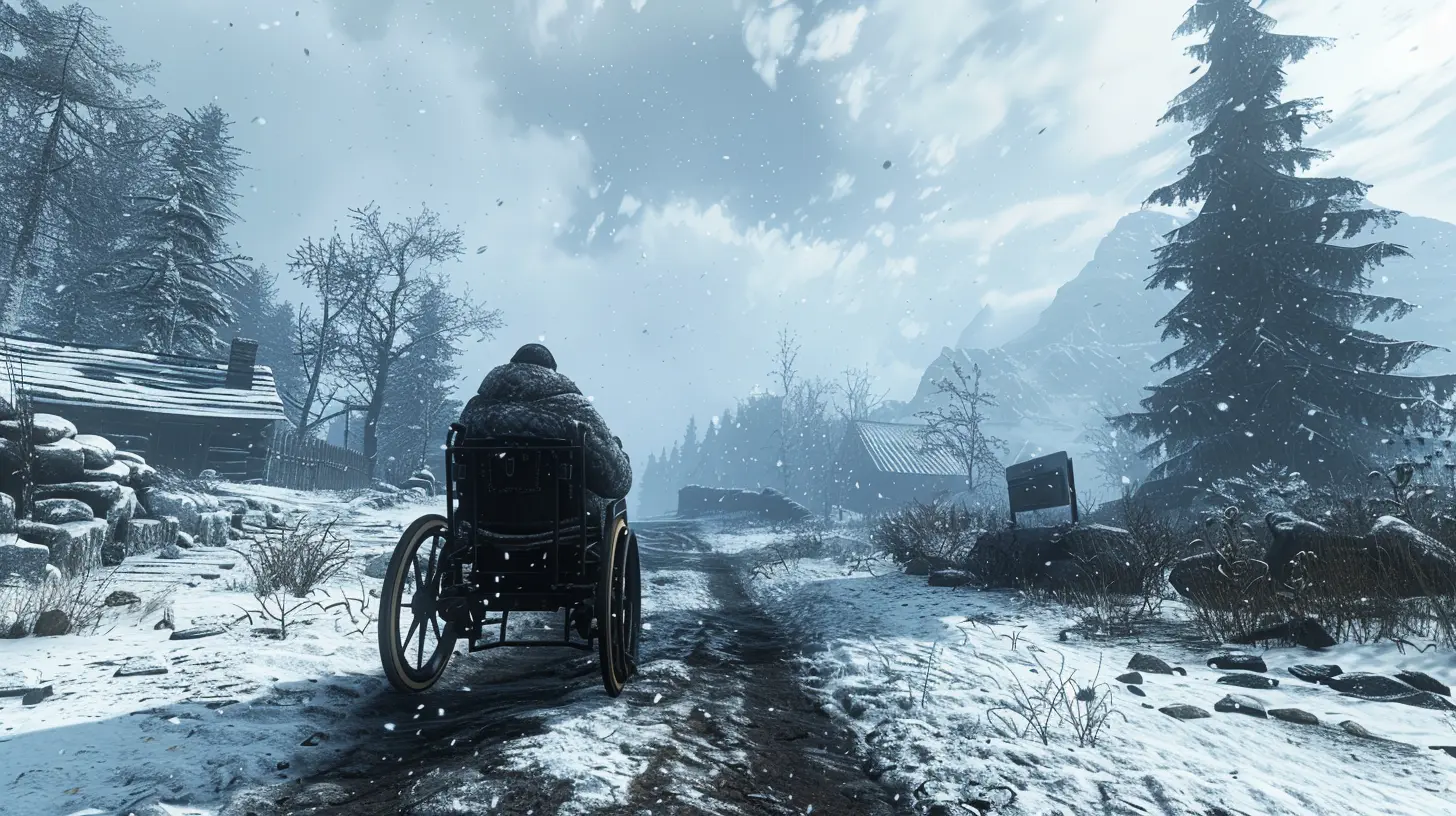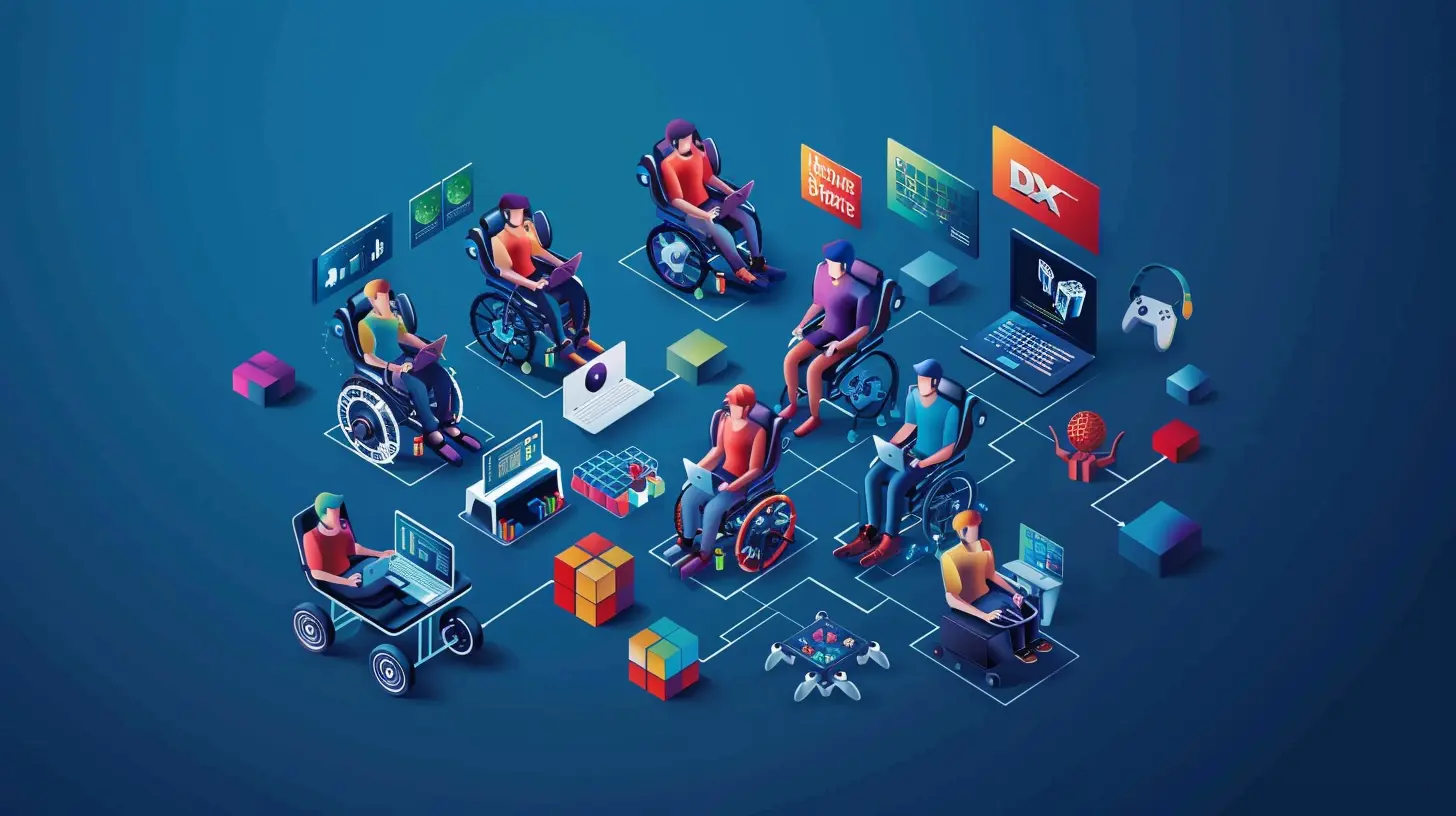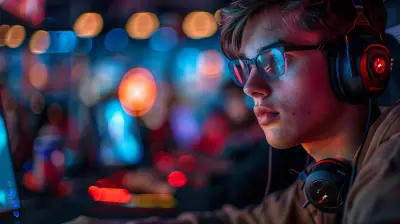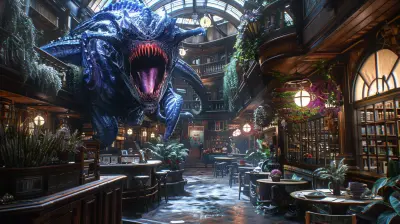How Game Accessibility Is Evolving for Players with Disabilities
19 June 2025
Gaming has come a long, long way. Remember the days when video games were pretty much "one-size-fits-all"? If you could hold a controller, see the screen, and understand the rules, you were good to go. But what about the people who couldn’t? For too long, players with disabilities were left out of the fun, excluded by controllers that weren’t flexible, text that wasn’t readable, and games that weren’t even remotely accommodating. Thankfully, times are changing, and game accessibility is evolving like never before.
In this article, we’re talking about how the gaming industry is breaking down barriers—one feature, one controller, and one patch at a time. If you're curious about how developers are making their games more inclusive, grab your favorite snack, sit back, and let's dive in.

What Is Game Accessibility?
Before we get into the nitty-gritty, let's clarify what we mean by "accessibility." Game accessibility refers to designing and developing video games in a way that players with disabilities can enjoy them just as much as everyone else. Disabilities can vary widely—visual impairments, hearing loss, motor difficulties, cognitive disorders—but the goal of accessibility is the same: letting everyone play.Imagine if your favorite game simply wasn’t playable because you couldn’t press a button fast enough, or you couldn’t read the text on the screen. Frustrating, right? Accessibility is all about removing those barriers and making sure no one is excluded.
Why Accessibility Matters in Gaming
Gaming isn’t just about entertainment; for many, it’s a community, a creative outlet, or even a way to relax after a long day. Games have the power to bring people together, tell incredible stories, and create memories that last a lifetime. So, when people are excluded from that experience because of a disability, that’s a pretty big deal.1 in 4 adults in the U.S. lives with some kind of disability, according to the CDC. That’s a huge chunk of the population! Why wouldn’t we want the gaming world to be open to them? Inclusivity isn’t just about making a game work for someone with a disability—it’s about creating a space where they feel welcome and valued. That’s why accessibility is at the forefront of modern game design.
The Rising Demand for Accessibility in Gaming
The push for accessibility didn’t just pop out of nowhere. It’s been building for years, thanks to the advocacy of disabled gamers and community organizations. Social media has also played a huge role, amplifying voices and highlighting the challenges players face. Remember when people rallied around accessibility advocate Steven Spohn and his #SoEveryoneCanGame campaign? Movements like these have shown developers just how big (and vocal) the demand for accessible gaming truly is.And here’s the thing—as the gaming industry gets more diverse, so does its audience. Developers are finally realizing that accessibility isn’t just a “nice-to-have”; it’s a necessity.
How Technology Is Driving Accessibility Forward
Technology is the real MVP when it comes to game accessibility. Advancements in hardware and software have enabled developers to create features that were unimaginable even 10 years ago. Here are a few ways tech is stepping up its game:1. Adaptive Controllers
One of the biggest breakthroughs in accessibility hardware is the Xbox Adaptive Controller (XAC). Released by Microsoft in 2018, this revolutionary piece of tech is specifically designed for gamers with limited mobility. With its modular design and customizable inputs, the XAC allows players to create a control setup that works for their unique needs. It’s been a game-changer—literally.Other companies are starting to catch on, too. Logitech, for example, has created adaptive gaming kits compatible with the XAC, making it even easier for players to create a setup that works for them.
2. Subtitles and Audio Descriptions
Accessibility isn’t just about physical interaction; it’s also about making games comprehensible for everyone. That’s where features like better subtitles and audio descriptions come in. Some developers are now offering fully customizable subtitles, letting players tweak the size, color, and background to make text easier to read. Naughty Dog’s The Last of Us Part II even includes audio cues for players with visual impairments. Talk about next-level inclusion!3. Colorblind Modes
Colorblindness affects roughly 1 in 12 men and 1 in 200 women, and for years, games just weren’t designed with that in mind. Colorblind players often struggled to distinguish between important visual cues—like red and green—or missed out on vital gameplay mechanics. Thankfully, many modern titles now include colorblind modes, offering alternative color schemes or patterns to ensure that everyone can enjoy the experience.Games like Fortnite and Call of Duty: Warzone have robust colorblind settings, allowing players to choose visual adjustments that work for their specific type of colorblindness. It’s a small change that makes a world of difference.
4. Customizable Controls
Ever tried to play a game where the controls feel completely unnatural? Now imagine if remapping those controls wasn’t an option because of a physical limitation. Yeah, not fun. That’s why customizable controls are such an essential feature. Most AAA titles now allow players to remap buttons, adjust sensitivity, and even change trigger functionality. This flexibility can turn a frustrating experience into an enjoyable one.Accessibility Features in Today's Most Inclusive Games
Let’s talk about some real-world examples. Which games are actually leading the charge when it comes to accessibility? Here’s a quick peek at a few that stand out:1. The Last of Us Part II
If accessibility had a gold standard, this game would probably be it. With over 60 accessibility options—including enhanced listening modes, text-to-speech capabilities, and high contrast modes—The Last of Us Part II raised the bar for the entire industry.2. Forza Horizon 5
Racing games might not seem like fertile ground for accessibility features, but Forza Horizon 5 begs to differ. The game includes sign language interpreters for cinematic sequences, customizable difficulty levels, and colorblind options. It’s a perfect example of how accessibility can be woven into the core experience.3. Spider-Man: Miles Morales
This action-packed superhero game features a range of accessibility options, from visual and auditory aids to extended time for quick-time events, making it a hit with many disabled gamers.Challenges That Still Need to Be Addressed
As much progress as we’ve made, there’s still a long way to go. Accessibility features, while more common now, are still not universal. Indie games, in particular, often struggle to implement these features due to limited budgets and resources. And even when accessibility features are included, they can sometimes feel like an afterthought rather than an integral part of the game design.Another problem? Awareness. Many players don’t even know that certain accessibility options exist. Better education—for both players and developers—is crucial if we want to see accessibility continue to evolve.
What’s Next for Game Accessibility?
So, where do we go from here? The future of game accessibility is looking pretty bright. Innovations like eye-tracking technology, AI-driven assistive features, and haptic feedback are already being explored as tools to make gaming even more inclusive. With ongoing advancements in tech and increased awareness, the gaming world is well on its way to becoming a more accessible space.But let’s not sugarcoat it: there’s still work to be done. Developers need to prioritize accessibility from day one, rather than tacking it on later. And as players, we need to keep pushing for change, amplifying marginalized voices, and holding companies accountable. After all, gaming is for everyone—no exceptions.
Final Thoughts
Game accessibility has come a long way, but it’s not a destination; it’s a journey. Every new feature, every adaptive controller, every customizable interface gets us one step closer to a world where gaming truly is for everyone. Whether you’re a gamer, a developer, or just someone who loves a good story, we all have a role to play in making the industry more inclusive. Let’s keep leveling up.all images in this post were generated using AI tools
Category:
Gaming NewsAuthor:

Tayla Warner
Discussion
rate this article
2 comments
Capri Sawyer
Great insights! Inclusivity truly enhances gaming.
August 30, 2025 at 2:54 AM

Tayla Warner
Thank you! I completely agree—enhancing inclusivity is key to evolving the gaming experience for everyone.
Piper McCarty
Game accessibility is like a secret cheat code for inclusivity! 🎮✨ With every update, we’re leveling up the fun for players with disabilities. Who knew gaming could be this heroic?
June 27, 2025 at 3:26 PM

Tayla Warner
Absolutely! Game accessibility is essential for creating a more inclusive gaming experience, and it's inspiring to see how advancements are benefiting players with disabilities. Every step forward makes gaming more heroic for everyone!

